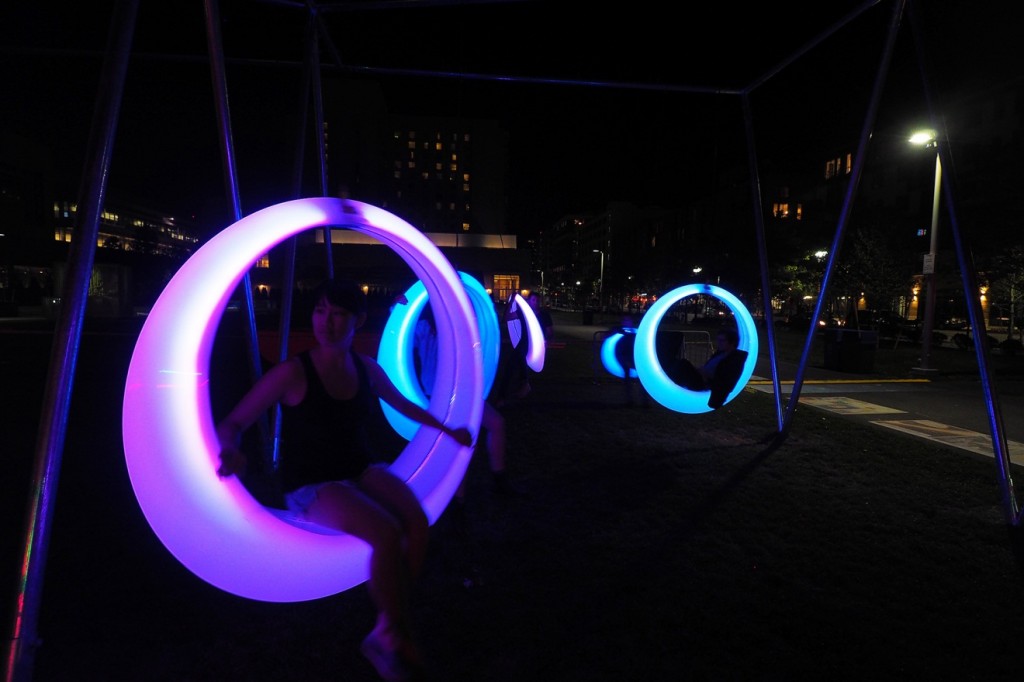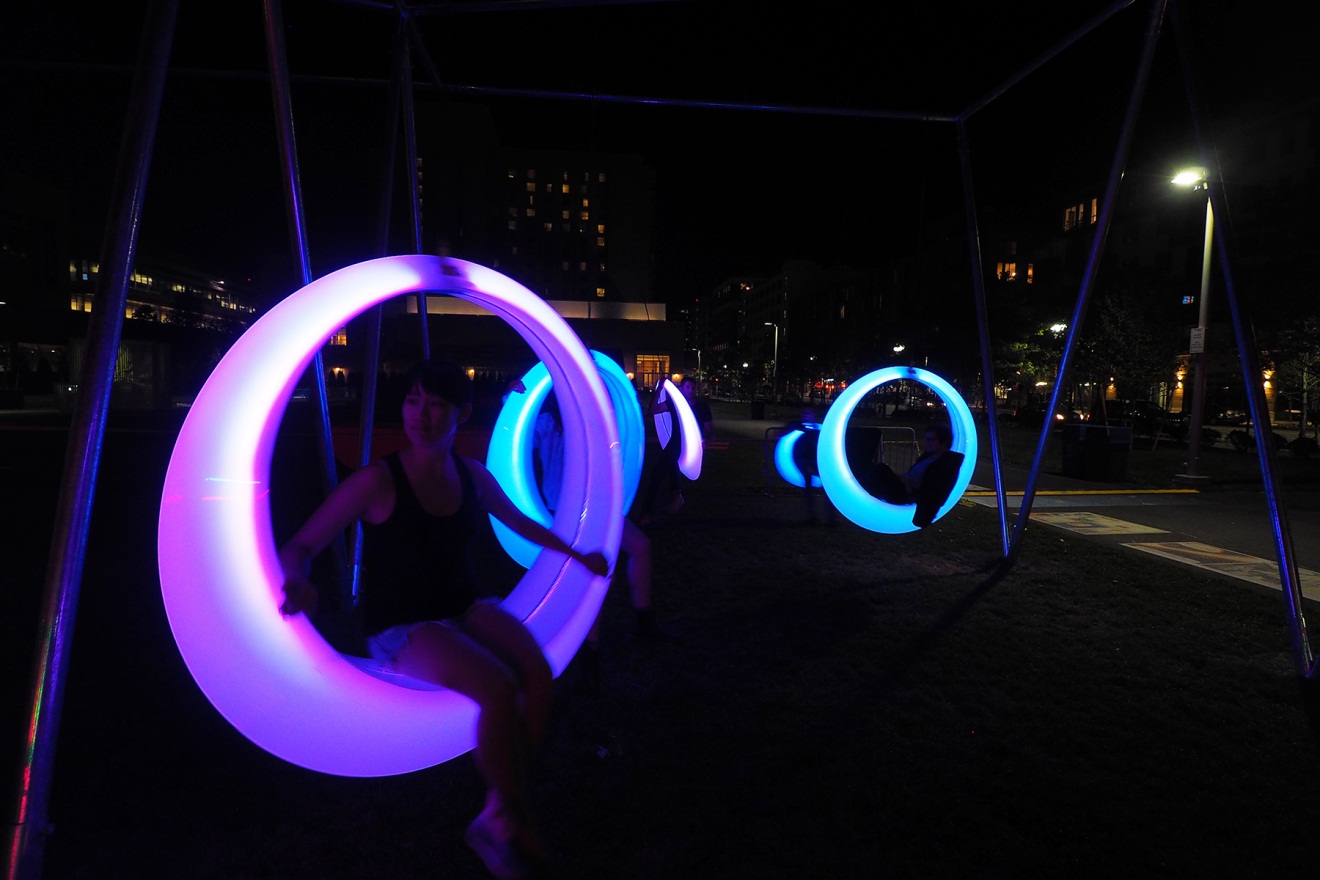
Last fall, the official opening of The Lawn on D featured what became the experimental park’s most popular feature, Swing Time – a set of 20 engaging swings outfitted with LED lights that change color when swung at varying speeds and heights. As The Lawn on D’s programming slate is poised to be bigger and better than last year, so too is Swing Time, which underwent environmentally sustainable improvements.
The product of Höweler + Yoon, a local and renowned architecture firm, Swing Time differs this year in that it will be powered by solar energy. This way, its flagship lighting feature will be maintained completely off the grid. It’s aptly being called Swing Time 2.0.
“We call it ‘eco-literacy,’ the idea that architecture and design can help people become more ecology literate – that they are empowered to understand the relationships between their actions and the ecology that they are a part of,” said Eric Höweler on the combination of environmentally friendliness and park innovations.
Höweler and company installed a solar cell canopy above the swings that features integrated solar panels. The panels are oriented to the optimal sun angle, due south, and are tilted towards the optimal solar inclination for summertime.
Solar energy is then harnessed to charge integrated batteries that, when fully charged, can power Swing Time’s LED system for up to three cloudy days.
Swing Time was conceived when Höweler + Yoon began toying with the idea for playfulness and instinctual desire by humans to play. That kind of visceral evocation is what inspires much of Höweler + Yoon’s work – how people engage with, and essentially play within, public spaces.
“This instinct is socialized out of us, as adults, and we were interested to bring an element of play back for adults,” said Höweler. “We’re inspired by the concept of homo ludens, or playful man. We are architects, trained to design buildings, but we also think we are designing behaviors so we design everything from buildings to behaviors.”
Swing Time’s popularity at The Lawn on D aptly mirrors Höweler + Yoon’s goals. It entices people to an open space, it prompts them to engage in a simple but enjoyable experience, and it serves as a piece of public art. A “playable city,” which Boston has shown flashes of, can be effective in breathing enjoyment into the lives of Boston denizens, sometimes more so than technological upgrades, and building a “smart city.”

That being said, Swing Time was just one of many playful installation ideas tossed around by Höweler + Yoon. Others included a large see-saw and a merry-go-round. As for the latter, both the Rose Kennedy Greenway and Boston Common currently boast carousels.
By adding the solar power component to Swing Time, Höweler said he hopes it’ll catalyze positive conversations about the environment and energy, and help make people more aware of where their everyday power is sourced from.
Even better is that this can apply to all types of next-generation park features and extend beyond that – from the commercial and residential development, to water consumption, to wind power, to simply flipping a light switch.
“We like the idea that we can re-qualify what it means to be green, or sustainable. Sustainable design is not about making checklists, its about changing the way people see themselves in relation to their environments,” said Höweler. “Being conspicuous about the power that you are producing/consuming is one way to do that. We like the term ‘eco-bling’ because it says that conspicuous production and consumption of clean renewable energy is worth celebrating.”
Swing Time 2.0 will be available for use at The Lawn on D’s season opening celebration on Friday, May 15. Also on tap for the event is live music, food truck goodies, adult beverages, lawn games and, two weeks later, a vibrant inflatable maze.
The Lawn on D will be open to the public seven days a week.

